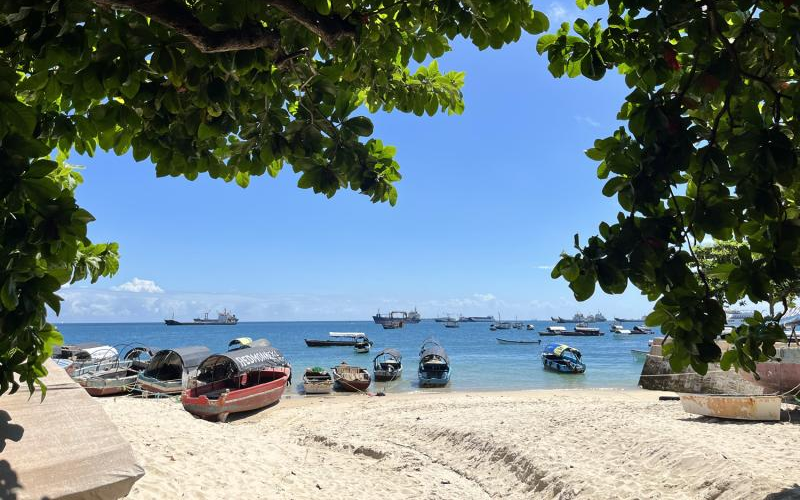Zanzibar is a favourite destination for Kenyans, with approximately 23,000 Kenyans visiting the archipelago in 2024. The island received more than 730,000 visitors that year. While some attractions are well known, Zanzibar has much more to offer — and recent changes to its entry requirements might surprise even regular visitors.
Mandatory travel insurance
When I landed at Sheikh Abeid Karume International Airport in Zanzibar last month, the first surprise was a mandatory travel insurance that all visitors must have. This travel insurance is purchased from the Zanzibar Insurance Corporation. The cost is $44 (or $22 for EAC citizens).
Note that you will need to have Tanzanian currency if paying in cash, as there is no mobile money option. This especially applies to EAC residents, like Kenyans, who do not need a visa to fly to Zanzibar. Countries that require a visa will most likely have paid this fee as part of their visa applications.
The mandatory insurance for visitors to the Zanzibar Archipelago was proposed last year and caused quite a stir in tourism circles.
“The travel insurance for East African travellers is half of what (other) tourists pay,” said Mudrik Soraga, Zanzibar’s Minister for Tourism, in an interview with The Sunday Standard. Soraga said Kenya is a key tourism source market for Zanzibar.
Culture and history
Once you are in Zanzibar proper, it’s time to settle down and explore. But to start with, it’s important to note that Zanzibar is an archipelago of many islands, the largest of which are Unguja (the capital) and Pemba. The island most visitors go to is Unguja, the seat of the Revolutionary Government of Zanzibar.
Once in Zanzibar, you’ll quickly understand why Tanzania’s official name is the United Republic of Tanzania — formed from two states that came together: Tanganyika and Zanzibar. While the national government governs the entire country, Zanzibar has maintained a semi-autonomous status, complete with its own government, president, and cabinet.
You’ll also notice that Zanzibar differs from the mainland — including in culture, laws, and regulations. Interestingly, there are more cars with Tanzanian (mainland) number plates on Kenyan roads than there are on Zanzibari roads. Zanzibar uses a different vehicle registration and number plate system from the mainland.
Attractions
The island is home to renowned attractions, one of the most famous being Forodhani. You might have seen groups of young people on social media yelling “Welcome to Zanzibar” before diving into the ocean in sleek videos. This has become such a phenomenon that many visitors now seek out this exact spot — even A-list celebrities like Lupita Nyong’o.
However, this is just a small part of what Forodhani has to offer. My personal highlight? The street food.
I’ve seen street food markets, but Forodhani is in a class of its own. The stars of the menu? Seafood and Swahili dishes. The traders here have created their own versions of popular foods, all with an underlying theme of sweet decadence. From shawarmas and shrimp to octopus and toothache-inducing chocolate and candy wraps, any pretense of dieting dies a quick death here.
At the edge of Forodhani begins Stone Town, very similar to Mombasa’s Old Town but better maintained and more vibrant. It is a UNESCO World Heritage Site, and yet it manages to sparkle without losing authenticity. If you are an art lover, you’ll feel at home here — in the midst of historical elegance are art galleries that stir the soul.
Another essential stop is the slave market, on the fringes of Stone Town, with haunting tales of the people who passed through it into slavery. Haunting and awakening at the same time. Don’t miss the spice tour either, where names like mdalasini and karafuu come to life.
Investments
Zanzibar has recently been making big strides in growing its appeal as an investment destination, in an effort to diversify its economy beyond tourism and spices, which are currently its leading earners.
As part of this effort, the islands have opened up to foreigners buying property in Special Economic Zones. Across the rest of Tanzania, foreign property ownership is typically restricted by red tape and regulations.
Enter the Zanzibar Investment Promotion Authority (ZIPA), which offers incentives such as the exemption of corporate tax for up to five years.
ZIPA Executive Director Saleh Saad Mohamed said investors also get exemptions on land rates for up to five years. He said Kenyans have invested more than $1.4b (More than KSh180b) in Zanzibar.
Buyers in real estate projects within these zones can also receive incentives such as a residency permit for an investment starting from of $100,000 (KSh12.9m).
One such development is Fumba Town, an eco-city developed by CPS Africa. Started in 2016, Fumba is accomplishing what many “city within a city” models in Kenya have struggled to do.
The completed development will span an impressive 60 hectares (149 acres) and feature a 1.5 km seafront, with everything from homes and schools to industries. According to Sebastian Dietzold, CPS Africa CEO, by 2035 Fumba is expected to have 5,180 residential units and 200 companies domiciled there, with $570 million (KSh73 billion) invested. Over 1,200 houses have already been built.
One of the star attractions of Fumba Town will be Burj Zanzibar, a 27-floor, 100-meter timber building — set to be the tallest timber tower in the world upon completion.
It’s important to note that, like the rest of Tanzania, property ownership for foreigners is highly restricted, and buyers outside special economic zones have little to no protection.
